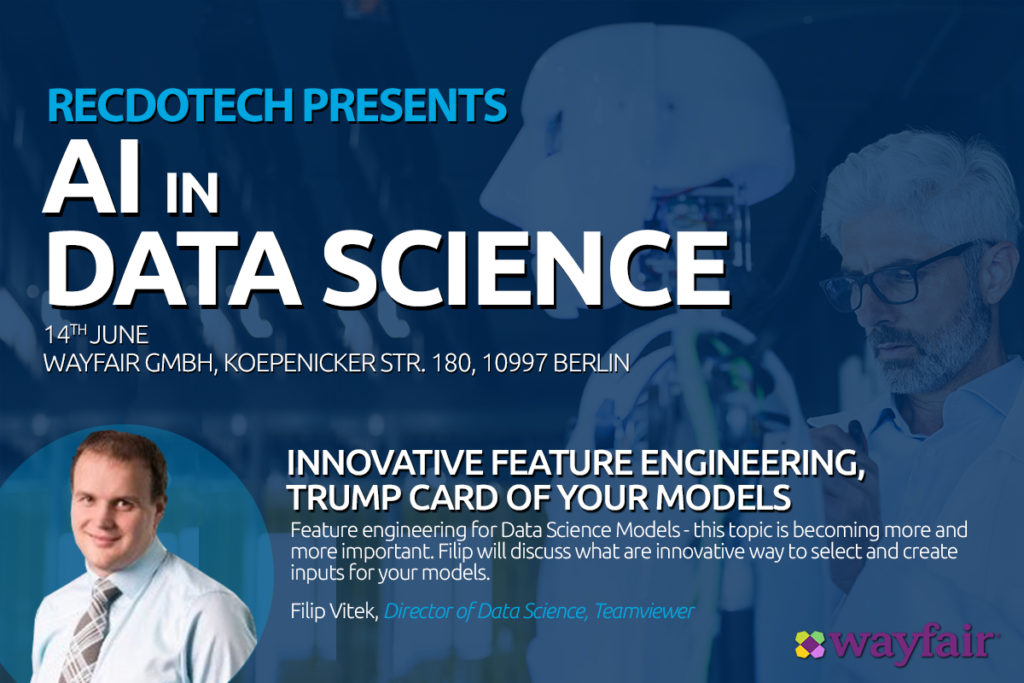Debate on if Artificial Intelligence (AI) will slash some jobs (or entire professions) transformed from obscure omen reading into mainstream heated issue. Truck drivers, financial intermediaries and few other professions are nervously looking ahead if they gonna join red-listed endangered species. They certainly have good reasons to be worried …
… but have about Data analytics? Are Data Scientists on the AI replacement to-do-list as well? What a silly question, isn’t it? Ultimately, the Data Scientist are the oil of the AI solutions. Thus, they will be the ones eating others’ jobs and they do not need to worry about their own future. Or should they maybe?
How sure you should (not) be
Few months ago, the economic expert commentaries were still shy in indications that the world economy state might deteriorate in quarters to come. Back then it was a message per week on this issue. In last 2 weeks the matter got visibly more dramatic, the black omens pop up now on, literally, daily basis. As we learned from past, every economic crisis usually slashes substantial number of jobs opportunities on the market. In this sense the crises to come will be no different. We learned not to worry about that too much, as new jobs are recreated back, when the economy walks from crises back to good times. The problem is that on this account the nearest crises will be different. It will kill some jobs that will be never be recreated again.
Almost any week you can see some profession striking for salary increases. As the economy is booming employees push to reap a slice from the victory cake. However, there are some jobs where salaries kept on rising without any push from labor unions. Data Science is one of that areas where annual income has been on crazy adventure to the north. Driven by over-demand on (weak) supply, companies were raising the pay-level to swerve people from competitions (or motivate more people to get re-qualify to Data Scientist). But no more. Data from US (largest free Data science labor market) indicate that the entry salary of the Data Scientist stagnated in 2017 and corrected few percentage points down in 2018. The reasons for that is the price of Data Science talent got over the level fitting business case for their possible impact in company (to justify their pay). Not many people realize that higher remuneration of these years are last dances before DJ calls off the party.
In both cases, the strike- or surge-driven salaries will make the AI replacement scenario more severe. When we come out of the crises, the employers will be facing the dilemma if to rehire stuff again or to replace some part of it by automation. The higher the annual salary level of employees, the easier the case for AI solutions to be cost-saver. Especially, the area of super expensive (and still scarce) Data scientists offers a lot of room for rethinking, as one year cost of Data Scientist in US is, literally, 7 digit figure.
The (seemingly strong) peace of mind of the Data community about their jobs security has roots in fatal attribution error. For most of the manual jobs the replacement will come with automation, presumably intelligent computers running on data. Therefore, data processing industry might be perceived as the lubricant of the whole automation process. Hence, the strong believe that data scientists are on the right side of this transformation river. While data might, indeed, be the oil of the AI transformation, it is ill conceived that humans necessarily need to take part in extracting it. If we stick to analogy, most of the things on oil rig is not human labor force but automation itself. Similarly, the repetitive and easy-to-automate jobs in Data analytics will not be run by humans. If you take two steps back and impartially review the work of most of recent data analysts their work is much more well-defined and repetitive than driving of the autonomous car. Therefore, data community should not wall into trap of illusions, that AI job revolution will take detour from their domain.
Time for panic?
The omens are out there, time for panic? Well, we as humans were having difficulties facing the previous industrial revolutions. And we will probably struggle this time around as well. Almost any time disrupting technology arouse in past, first answer was to push back by, literally, beating the machines. However, there are ways how we can face the AI job hunt properly. I have been invited to speak about HOW TO SURVIVE the (first) AI ATTACK on DATA SCIENCE JOBS at the DataFestival 2019 in Munich this week. This is a short teaser about the topic, and I offer you exclusive sneak-peek into
PRESENTATION >>> FILIP_VITEK_TeamViewer_SURVIVAL_TICKET
here as you are precious members our TheMighyData.com community. As this topic hits all of us, any comments or views from you on this topic are highly welcomed in comments to this blog or at info@mocnedata.sk ; Enjoy the reading and see you on some other event soon.

 Visual & Voice analytics & Words analytics
Visual & Voice analytics & Words analytics Relying on Time series analysis, some forms of Machine learning or Graph database analytics. Supporting Online and Marketing departments of the larger companies or start-ups in these fields. To survive on this island, you need to be familiar with Google Analytics and/or APIs to major social media networks. Crunching and storing of data often happens in external cloud, analytical results are needed in (near) real-time basis. Projects have short span of time; their results often morph into permanent monitoring of the discovered patterns.
Relying on Time series analysis, some forms of Machine learning or Graph database analytics. Supporting Online and Marketing departments of the larger companies or start-ups in these fields. To survive on this island, you need to be familiar with Google Analytics and/or APIs to major social media networks. Crunching and storing of data often happens in external cloud, analytical results are needed in (near) real-time basis. Projects have short span of time; their results often morph into permanent monitoring of the discovered patterns. Behavioral Analytics
Behavioral Analytics sense of them through multiple layers of own features. Using Deep Learning methods teaches machine to decide within stated error rate allowance. Data are either real-time of historical logs of some process or motions’ sequence. Uses opensource Neural network-based packages like
sense of them through multiple layers of own features. Using Deep Learning methods teaches machine to decide within stated error rate allowance. Data are either real-time of historical logs of some process or motions’ sequence. Uses opensource Neural network-based packages like 



 Music and Art Generation using Machine Learning | Curtis Hawthorne
Music and Art Generation using Machine Learning | Curtis Hawthorne
 In my presentation, titled “
In my presentation, titled “



